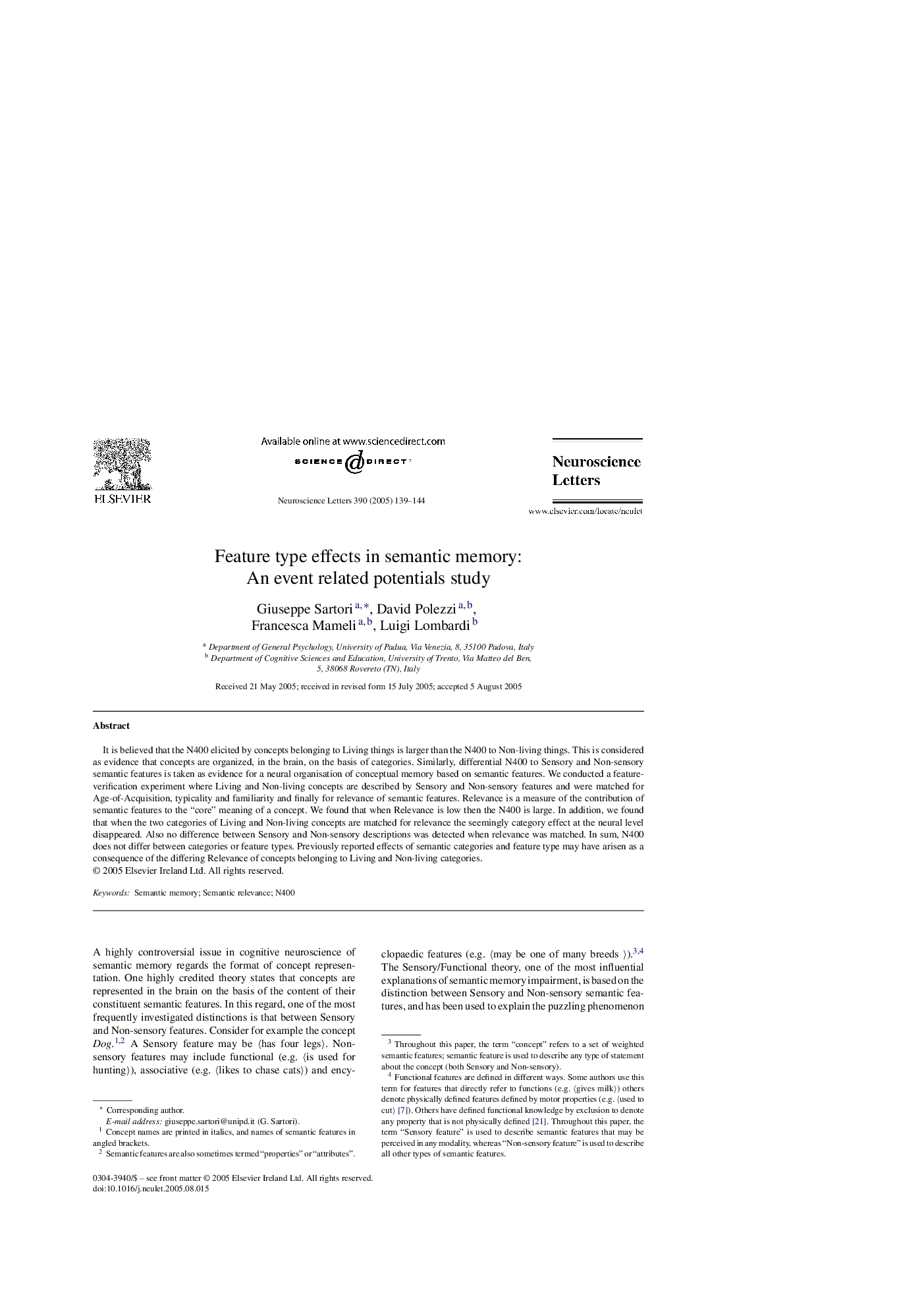| Article ID | Journal | Published Year | Pages | File Type |
|---|---|---|---|---|
| 9428872 | Neuroscience Letters | 2005 | 6 Pages |
Abstract
It is believed that the N400 elicited by concepts belonging to Living things is larger than the N400 to Non-living things. This is considered as evidence that concepts are organized, in the brain, on the basis of categories. Similarly, differential N400 to Sensory and Non-sensory semantic features is taken as evidence for a neural organisation of conceptual memory based on semantic features. We conducted a feature-verification experiment where Living and Non-living concepts are described by Sensory and Non-sensory features and were matched for Age-of-Acquisition, typicality and familiarity and finally for relevance of semantic features. Relevance is a measure of the contribution of semantic features to the “core” meaning of a concept. We found that when Relevance is low then the N400 is large. In addition, we found that when the two categories of Living and Non-living concepts are matched for relevance the seemingly category effect at the neural level disappeared. Also no difference between Sensory and Non-sensory descriptions was detected when relevance was matched. In sum, N400 does not differ between categories or feature types. Previously reported effects of semantic categories and feature type may have arisen as a consequence of the differing Relevance of concepts belonging to Living and Non-living categories.
Related Topics
Life Sciences
Neuroscience
Neuroscience (General)
Authors
Giuseppe Sartori, David Polezzi, Francesca Mameli, Luigi Lombardi,
